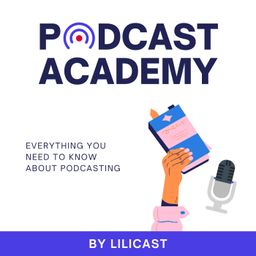
6 - Target audience of my podcast

Chapters



















Description
(00:00:00) INTRO You are now ready to get started: You have your equipment, an idea, and some time ahead of you. That's very good! Now, the question is, who is your target audience? As how can you generate interest from your audience if you do not know who you are talking to? (00:00:18) IDEAL AUDITOR The target audience of your podcast will become more refined over time, as episodes and feedback from your listeners increase. But you need to have an idea of the profile of your average listener right from the start. Why? Because the podcast is a showcase. A very beautiful one, indeed. It allows people to discover your world in a global and intimate way. Driven by your voice, they will probably end up pushing the door of your store! (00:00:45) And if you have made a podcast about paintwork while selling spare parts for car repairs, the customer won't understand what they are doing here. The customer will turn around and not come back to your shop. Because no matter how pretty the shop looks, it doesn't meet any of the customers' needs. (00:01:03) PORTRAIT ROBOT Draw a portrait of your ideal listener. Is it a man or a woman, or is he or she passionate about economics, cooking, or personal development? Is he or she active and likely to listen to you while commuting, or will he or she take the time to listen to you without doing anything else, sipping coffee in the kitchen, with his or her eyes lost on the surrounding countryside? Imagine him or her and adapt your speech according to the sketch you have made. And then talk to them, imagine yourself face to face with them. You will adapt your way of speaking spontaneously. Because you know that not everyone can be addressed in the same way. (00:01:43) SOCIAL NETWORKS To define your target audience, don't hesitate to use your social networks to question those who follow you. Launch surveys, ask them who they are, why they follow you, how they listen to you, and what they do for a living. People love to give their opinion, so take advantage of it. It will really help you: you'll see some common ground and you'll be able to meet their needs better. (00:02:06) PRECISIONS When drawing up a portrait of your ideal listener, be more or less precise, depending on the data you have. Let's imagine. You launch a podcast about motherhood. You can simply decide at the outset that you're targeting mothers between the ages of 25 and 45. But, relying on the feedback you get, you may also decide that your ideal profile is a woman in her 30s, who is currently pregnant, or who has just given birth to her first child. The more specific you are, the more accurate your message will be. And the more loyal your listeners will be to you because they'll find exactly what they need from you. (00:02:44) EVERYBODY = NOBODY The temptation to talk to as many people as possible is high. If we do a podcast, we will want to be listened to, obviously. But to want to talk to everyone is actually to talk to nobody. By aiming for an ultra-large audience, you risk triggering a chain of banalities. It's better to have a smaller audience that's greatly interested in what you're saying than a lot of people who listen to you halfway and end up not really knowing why they're doing this.




